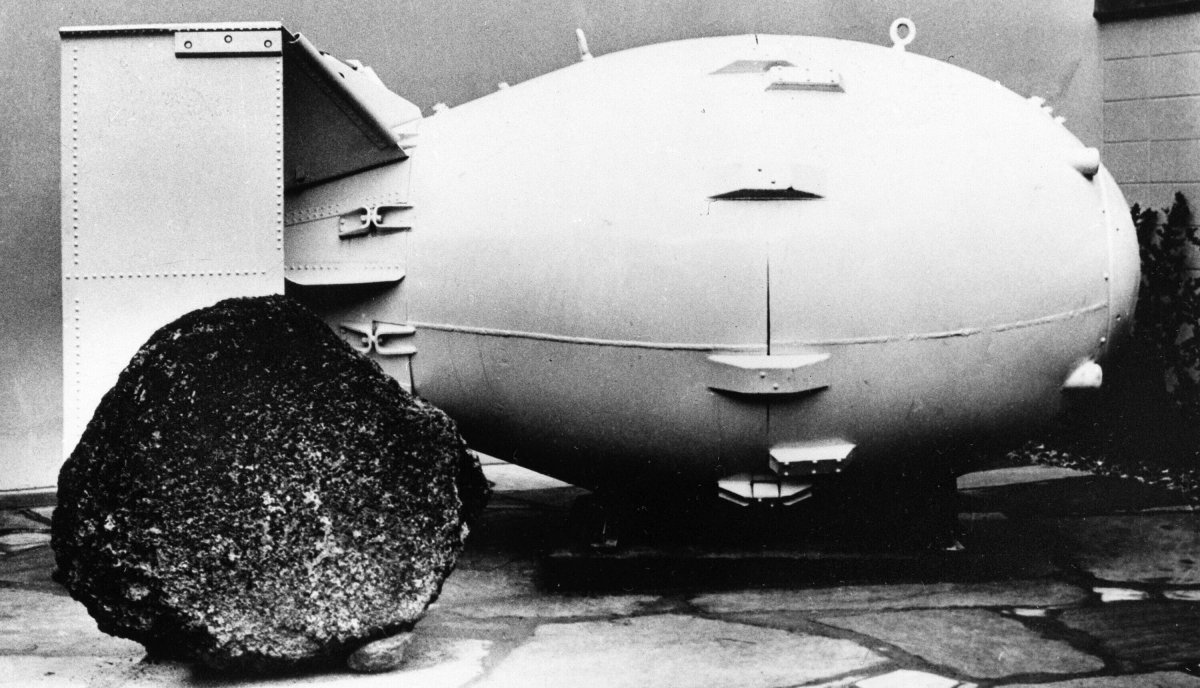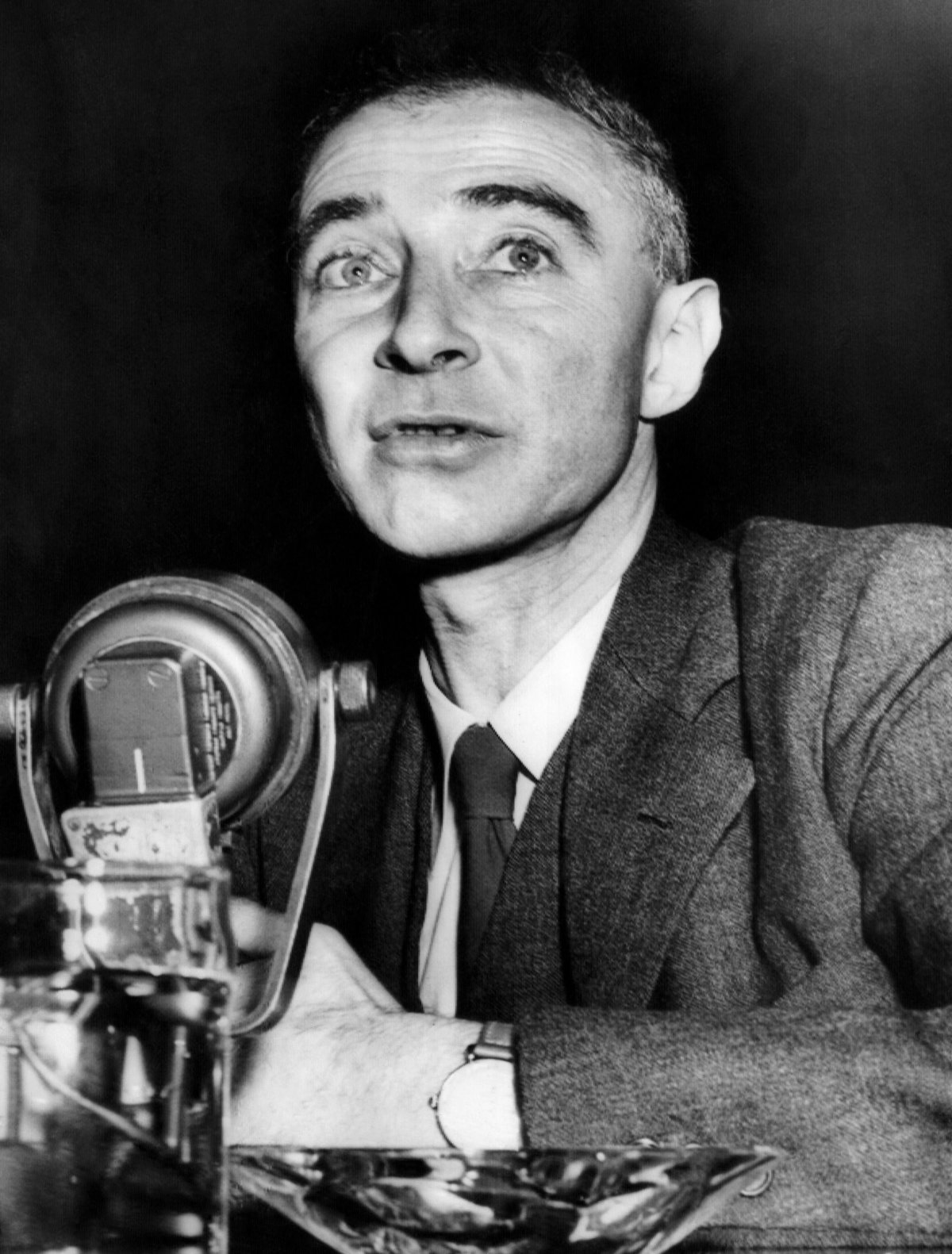He is known as the “father of the atomic bomb.”

Robert Oppenheimer, a physicist who played a leading role in the United States’ Manhattan Project during the Second World War, is making headlines once again as a Hollywood film about his life hits Canadian theatres Friday.

Oppenheimer’s work changed the course of world history, and although loyal to the American cause, he would later be accused of having communist sympathies in a trial that was ultimately condemned years later.
Here is what we know about Oppenheimer.
Who was Robert Oppenheimer?
Born in 1904 in an affluent New York family, Oppenheimer graduated from Harvard University majoring in chemistry in 1925.
After graduation, Oppenheimer accepted an invitation from Max Born, director of the Institute of Theoretical Physics at the University of Göttingen, to study with him in Germany, the Atomic Heritage Foundation states on its website.
At the time, European physicists were developing the groundbreaking theory of quantum mechanics. Oppenheimer received his doctorate in 1927, and accepted professorships at the University of California, Berkeley, and the California Institute of Technology.
Oppenheimer was already considered an exceptional theoretical physicist by the time the Manhattan Project came about in 1942. He had been deeply involved in exploring the possibility of an atomic bomb.
In 1941, he had been doing research on fast neutrons, calculating how much material might be needed for a bomb and how efficient it could be.
How did he get involved in the Manhattan Project?
According to the Atomic Heritage Foundation, on Oct. 15, 1942, U.S. Gen. Leslie R. Groves approached Oppenheimer and asked him to get involved in “Project Y” – a secret laboratory established by the Manhattan Project that would be the central facility for the development of the world’s first atomic bombs.
His appointment was approved days later, and on Nov. 16, Oppenheimer and Groves visited Los Alamos, New Mexico and chose it to house Project Y.
Despite having little managerial experience, Oppenheimer was named as director of the Los Alamos Laboratory in 1943. He oversaw its construction and recruited top physicists to work on developing the atomic bomb.
Two years later, on July 16, 1945, the first nuclear test – codenamed Trinity – took place in the Jornada del Muerto desert, successfully.
According to the U.S. department of energy’s office of scientific and technical information (OSTI), the most common immediate reactions to the explosion were surprise, joy and relief. But soon after, shock and euphoria gave way to more sober reflections.
Oppenheimer would write the experience reminded him of the legend of Prometheus, punished by Zeus for giving man fire, and said he also thought fleetingly of Alfred Nobel’s vain hope that dynamite would end wars.
Most famously, Oppenheimer later recalled the explosion had reminded him of a line from the Hindu holy text, the Bhagavad-Gita: “Now I am become Death, the destroyer of worlds.”
Less than a month after the successful test, the U.S. dropped two atomic bombs on Japan, killing some 215,000 people and bringing about the end of the Second World War, but ushering in the era of the nuclear arms race.
What happened to Oppenheimer?
After the war ended, Oppenheimer left the Los Alamos Laboratory to take up a post at CalTech in October 1945. In 1947, he became the director of the Institute for Advanced Study in Princeton, N.J.
When the war ended, the government set up the Atomic Energy Commission (AEC) to replace the Manhattan Project.
The AEC was charged with overseeing all atomic research and development in the United States. As chairman of the general advisory committee, Oppenheimer opposed the development of the more-powerful hydrogen bomb.
In the context of the Cold War, when the United States and the Soviet Union jockeyed for power, Oppenheimer’s stance was controversial, the Institute for Advanced Study states on its website.
In the 1950s, anti-Communist hysteria was sweeping through Washington with some lawmakers devoting themselves to rooting out Communist spies from every walk of American life.
Oppenheimer was subjected to a security investigation that divided the intellectual and scientific community.
In 1953, he was denied security clearance and lost his position with the AEC. In December 2022, U.S. President Joe Biden’s administration reversed that decision, saying it was made using a “flawed process” that violated the commission’s own regulations.
In April 1962, the U.S. government made amends for the treatment Oppenheimer suffered, when then-president John F. Kennedy invited him to a White House dinner of Nobel Prize winners. In 1963, president Lyndon B. Johnson awarded Oppenheimer the highest honor given by the AEC, the Fermi Award.
Oppenheimer died of throat cancer on Feb. 18, 1967.
Why is Oppenheimer in the news now?
Oppenheimer’s story finds itself back in the headlines thanks to acclaimed filmmaker Christopher Nolan, whose biopic Oppenheimer hits Canadian theatres Friday.
Irish actor Cillian Murphy plays the lead role, with other prominent actors like Emily Blunt, Matt Damon and Robert Downey Jr. cast in the film.
In a nod to Oppenheimer’s legacy, U.S. officials vowed to prioritize the cleanup of waste from the nuclear research facility in Los Alamos Thursday.
Ike White, who heads the department of energy’s office of environmental management, said the release of Oppenheimer makes it a good time to talk about the legacy that came from the dawning of the atomic age.
Part of the environmental cleanup mission requires an examination of history, White told those gathered at the historic Fuller Lodge in the heart of Los Alamos.
He characterized the nation’s multibillion-dollar cleanup program as the third largest liability on the books for the U.S. government – behind only Social Security and Medicaid.
— with files from The Associated Press











Comments